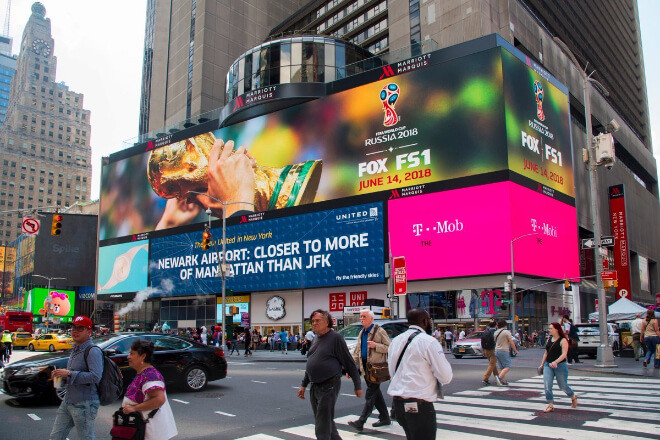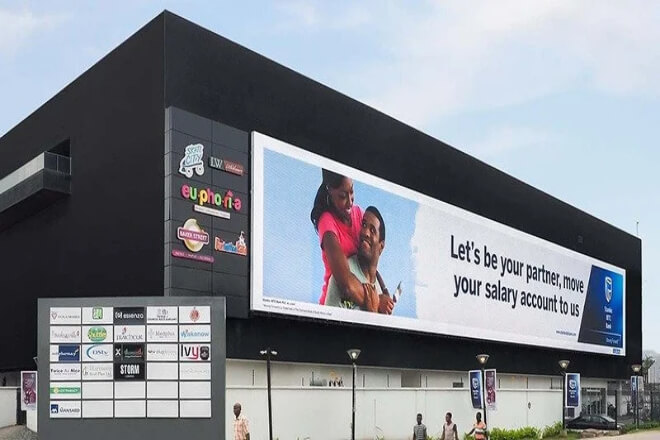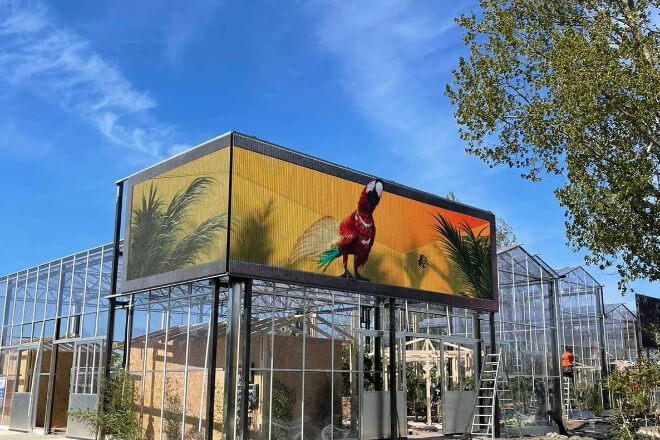介绍

Whether in a bustling commercial street, a busy stadium, or a quiet conference room, LED显示屏 attract our attention with their colorful pictures.
However, have you ever thought that these seemingly ordinary displays actually hide huge energy-saving potential? Today, let us explore energy-saving tips for LED displays.
目录
Tip 1: Hardware optimization energy-saving methods for LED displays

1). Choose high-efficiency LED chips
In simple terms, LED chips are like the “heart” of the display, and their efficiency determines the energy consumption of the display.
A high-efficiency LED chip is like a fuel-efficient engine that can use less electricity while achieving the same brightness.
When choosing a chip, you have to look carefully at its technical parameters, especially the light efficiency (lumens/watt), that is, how much electrical energy it can convert into light.
The performance of chips from different brands varies greatly. Compare them more and choose the chip with high light efficiency and a good reputation.
For example, although some high-end chips are slightly more expensive, they can save electricity and have better display effects, making them more cost-effective to use.
In actual use, replacing the display screen with this high-efficiency chip can use less electricity.
In the long run, the electricity bill can be saved a lot, and the life of the display screen can also be extended, killing two birds with one stone.
2). Optimize the drive circuit design
The drive circuit is like the “brain” of the display screen, controlling the working state of the LED chip.
Using a constant current drive circuit is like giving the chip a stable “working environment” to keep the current stable so that the chip will not waste electricity due to the current fluctuations and can also reduce the risk of damage.
Cooperating with manufacturers to optimize circuit design is actually to make the current more stable and reduce unnecessary fluctuations.
In addition, there is now a technology called pulse width modulation (PWM).
The current can be flexibly adjusted according to the required brightness of the display, so that a lot of electricity can be saved when it is not needed to be very bright.
Combined with the intelligent control module, the display can automatically adjust the brightness according to the ambient light.
For example, dim it when the light is strong during the day, and brighten it when the light is dark at night, which can save energy and ensure the display effect.
The significance of optimizing the driving circuit is that it can not only save power but also make the display screen last longer and have fewer failures. In the long run, it can save a lot of maintenance costs.
3). Optimization of the cooling system
Heat dissipation is very important for the display screen. Just like people need to dissipate heat after exercise, the display screen will also heat up when working.
If the heat dissipation is not good, the display screen will overheat, which will not only waste electricity but also be easily damaged.
It is important to choose the right heat dissipation method according to the power density of the display screen (that is, the power per unit area).
Low power density can use natural heat dissipation, and high power density must use active heat dissipation, such as increasing the heat sink area or adjusting the fan layout.
The larger the heat sink area, the better the heat dissipation effect, but it should not be too large; otherwise, it will take up space.
The fan layout is also critical so that the airflow can blow evenly across the display screen to avoid local overheating.
You can also use materials with better thermal conductivity, such as copper or aluminum alloy, which will have a better heat dissipation effect.
For particularly high-power displays, liquid cooling can even be used for heat dissipation. In addition, it is also important to regularly clean the dust on the heat sink and fan.
Too much dust will affect the heat dissipation effect and cause the display screen to overheat.
The benefit of optimizing the cooling system is that it can reduce the electricity wasted due to overheating, extend the service life of the display, reduce failures, and save money on repairs.
Tip 2: Software-controlled energy-saving methods for LED displays

1). Intelligent brightness adjustment method
Imagine that your display is like a smart light bulb that can “see the environment.”
By installing an ambient light sensor, the display can sense the intensity of the surrounding light and then automatically adjust its brightness.
For example, when the sun is shining outside, the display will automatically adjust to 80% brightness, which can ensure a clear picture without wasting electricity due to excessive brightness.
When night falls or enters a dark room, the display will automatically adjust to 40% brightness, which saves electricity and does not make people feel dazzling.
The specific operation is also very simple. You only need to set the threshold for brightness adjustment.
For example, when the ambient light intensity exceeds a certain value, the brightness is adjusted to 80%.
When the ambient light intensity is lower than a certain value, the brightness is adjusted to 40%.
This automatic adjustment method not only saves energy, but also keeps the display effect of the display at its best.
Why do this? Because in many cases, the brightness of the display is fixed, regardless of day or night, indoors or outdoors, it is the same brightness. This not only wastes electricity but also may make people feel glaring or unclear.
Through intelligent brightness adjustment, the brightness can be adjusted according to actual needs to avoid unnecessary energy consumption, and at the same time, the service life of the display can be extended.
After all, the display will work at the appropriate brightness, and the loss will be smaller.
2). Time-sharing control and timer switch method
This method is like arranging a “work and rest schedule” for the display. Through software settings, the display can have different working states in different time periods.
For example, when there is a large flow of people during the day, the display can operate normally and display various exciting content.
But at night or when there are few people, the display can reduce the display frequency or simply turn off part of the display area and only display some necessary information. This can save electricity without affecting normal use.
The specific operation is also very simple. For example, from 10 pm to 6 am, the display can be automatically turned off, or only a small area is retained to display basic information such as time and weather.
During off-peak hours, such as at noon or late at night, the display can reduce the display frequency from 30 frames per second to 10 frames per second, which can also significantly reduce energy consumption.
Why do this? Because in many cases, the display runs 24 hours a day, but in fact, such a high operating frequency is not needed in many cases.
Through time-sharing control and timer switches, unnecessary running time can be reduced, energy consumption can be reduced, and the service life of the display can also be extended.
After all, the less the machine is used, the slower it breaks down, and in the long run, it can save a lot of maintenance costs.
3). Content optimization method
The content displayed on the display actually affects energy consumption.
For example, high-brightness colors (such as white) and fast animations will make the display more power-consuming.
Therefore, energy saving can be achieved by adjusting the display content.
The specific method is to minimize the use of high-brightness colors, such as replacing white with a slightly darker color; at the same time, reduce the frame rate of the animation and make the animation move slower.
The specific operation is also very simple. For example, when making display content, minimize the use of high-brightness colors, such as white and yellow, and use more soft colors, such as gray and light blue.
For animated content, the frame rate can be reduced from 30 frames per second to 15 frames per second or even lower.
Although this may not seem to change much, it can significantly reduce the energy consumption of the display.
Why do this? Because the energy consumption of the display is closely related to the brightness of the displayed content and the speed of the animation.
High-brightness colors and fast animations will cause the LED lamp beads of the display to light up more frequently, thereby increasing energy consumption.
By optimizing the displayed content, you can not only reduce energy consumption but also make the display effect more comfortable and reduce eye stimulation.
Moreover, the optimized display content will not look very dazzling, which is better for the eyes.
Tip 3: Energy-saving methods for daily use of LED displays

1). Reasonably set display parameters
In short, don’t adjust the display too bright or too high in contrast. Many users will adjust the brightness and contrast to the highest level after installing the display, thinking that this looks the clearest and most vivid.
But in fact, this will waste a lot of electricity and is not good for the eyes. You can manually adjust the brightness and contrast of the display to the lowest level that just meets the viewing needs and adjust the contrast to moderate.
For example, in an indoor environment, it may be enough to adjust the brightness to about 50%, and the contrast to about 70% can also ensure a clear picture.
This not only saves electricity, but also makes the display effect of the display more comfortable.
Why do this? Because too high brightness and contrast will make the LED lamp beads of the display work more frequently and consume more electricity.
Moreover, long-term high-brightness operation will accelerate the aging of the display and shorten its service life.
By setting the display parameters reasonably, it can not only meet the viewing needs, but also reduce unnecessary energy consumption, killing two birds with one stone.
2). Regular maintenance and cleaning methods
After the display has been used for a long time, dust will accumulate on the surface and heat dissipation holes, which will affect the heat dissipation effect and cause the display to overheat, which will not only waste electricity but also shorten its service life.
Therefore, it is important to clean the surface and heat dissipation holes of the display regularly. You can gently brush off the dust with a soft brush or blow it with compressed air.
Cleaning it every once in a while (such as a month) can keep the display in a good heat dissipation state.
Why do this? Because good heat dissipation allows the display to work at a more comfortable temperature and reduces the extra energy consumption caused by overheating.
Moreover, good heat dissipation can also extend the service life of the display and reduce the failure rate.
Regular dust cleaning can not only save electricity but also make the display last longer.
3). Avoid long-term high-load operation method
The display is also a machine. It runs continuously for 24 hours, just like a person who does not rest all the time, it is easy to have problems. Therefore, it is important to arrange the use time of the display reasonably.
For example, it can be set to automatically shut down from 12 o’clock in the evening to 6 o’clock in the morning or shut down for a period of time during the lunch break.
This can not only reduce unnecessary running time but also give the display a “breath” and reduce the risk of failure.
Why do this? The long-term high-load operation will keep the various components of the display in a high-intensity working state, which is easy to cause overheating, aging.
And other problems, which will not only increase energy consumption but also shorten the service life of the display.
By reasonably arranging the use time and letting the display rest regularly, the risk of failure can be effectively reduced, energy consumption can be reduced, and the service life of the equipment can be extended.
Tip 4: Environmental factors of LED display energy-saving method

1). Temperature and humidity adjustment method
The LED display is like a person. It is uncomfortable if it is too hot or too humid, and it is easy to have problems.
If the ambient temperature is too high, the cooling system of the display screen will have to work hard, and the power consumption will naturally increase.
If the humidity is too high, the components inside the display screen will be easily damp, affecting the lifespan.
Therefore, installing a temperature and humidity sensor on the display screen is like equipping it with a “little housekeeper” that can monitor the surrounding temperature and humidity in real-time.
The specific operation is also very simple: first, find a suitable place near the display screen to install the sensor and then connect it to an intelligent control system.
Set the temperature and humidity range, such as keeping the temperature between 20℃ and 30℃ and the humidity between 40% and 60%.
Once the environment exceeds this range, the system will automatically start the air conditioner or dehumidifier to adjust the environment to the most comfortable state for the display screen.
This will not only save electricity but also make the display screen last longer and have fewer failures.
2). Shading and ventilation measures
If the display screen is exposed to direct sunlight or placed in a poorly ventilated place, it will be “hot and smoking,” the cooling system will have to work hard, and the energy consumption will naturally go up.
Therefore, “build a sunshade” or hang curtains for the display screen to block excess sunlight when the sun is the most poisonous and reduce the heat absorbed by the display screen.
At the same time, let the air in the computer room “breathe freely,” such as installing ventilation fans or optimizing the ventilation layout to let the airflow and help the display screen dissipate heat.
The specific operation is also very simple: install sunshades or curtains above or around the display screen and pull them down when the sun is strong.
Install ventilation fans in places with poor ventilation; and regularly clean the dust in the vents to allow smooth air circulation.
Through these small measures, the operating temperature of the display screen can be reduced, the heat dissipation system can be much easier, and energy consumption will naturally be reduced.
3). Use natural light method
If the location of the display screen can “borrow some light” and use natural light during the day, less artificial lighting can be used.
For example, place the display screen near the window, or when there is sufficient natural light, lower the brightness of the display screen. In this way, the display screen will not only look as clear but also save a lot of electricity.
The specific operation is also very simple: when installing the display, try to choose a place with sufficient natural light, then install a light sensor, which can automatically adjust the brightness of the display according to the intensity of natural light.
If there is no intelligent control system, you can also adjust the brightness manually, such as lowering the brightness when the sun is bright and raising it on cloudy days or at night.
In this way, the display can maintain the best display effect under different lighting conditions while reducing the need for artificial lighting and reducing energy consumption.
5. 结论
Through the above simple and practical energy-saving tips, we can not only make the LED display run more efficiently but also save a lot of electricity bills in daily use and make our own contribution to environmental protection.
These tips are not only suitable for commercial places, but also for office environments.
最后,如果您想了解更多关于LED显示屏的知识, 请与我们联系.
